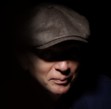[image error]
I’ve always wanted to fly.
After sixteen months in Vietnam, where I spent a lot of crew time on
board helicopters, my desire to fly was stronger than ever. I went to Napier Field, in Dothan, Alabama,
found Steve Winters, an instructor at the Cessna dealership, and signed
up. Fourteen dual instruction hours
later, I soloed.
In the next few months, I accumulated a lot of hours, but
for a lot of reasons I didn’t take the private pilot written examination and
test flight. I didn’t fly again for
almost seventeen years. When I had money,
I didn’t have time; when I had time I didn’t have money. Then I moved to Mentone, Alabama where I had
both time and money. I went to Isbell
Field, in Fort Payne, Alabama. There I
met Waylon Lyons, the Fixed Base Operator at the airport and the owner of Lyons
Aviation.
Waylon, an old Army Aviator, had over 30,000 accident free
hours of flying in almost every type of aircraft. He had a twinkle in his eyes and a sense of
humor to go with it. He also had a
handlebar mustache and deep wrinkles around his eyes, no doubt the result of
laughing a lot and staring into the sun through countless airplane windscreens.
I told him what I wanted and sheepishly handed him my old
log book. He flipped through it, looked
at me, laughed, and said, “You have some catching up to do.” I’m not quite sure how it happened but within
minutes, I was strapped in the seat, the pilot’s seat, of a red and white Cessna
152. As we taxied toward the runway,
Waylon began my instruction. “Follow me
on the controls to get the feel again.” I
put my hand lightly on the yoke and my feet on the rudder pedals. “Easy,” he cautioned. I won’t get it in the air if I have to carry
you.” He laughed and continued his
dialogue.
Ten feet from the runway he stopped, checked the
instruments, took the microphone off its hook on the dash, keyed it and said, “All
traffic in the Fort Payne area, Cessna 26 Whiskey is departing on runway 4.” With that said, he listened to the silent
radio speakers for a few seconds, looked to the east, then the west, then released
the brakes, moved onto the runway, turned smoothly toward the west, lined up
with the center strip and gave the little plane full power. Seconds later, I was flying again.
We flew an hour that day, two hours the following day, and
on the third day, we had flown an hour of what was to be a two hour lesson when
Waylon said, “Go back to the airport and do a touch and go.” I complied, executing the landing and
takeoff. As we climbed away from the
airport he said, “Get back in the pattern, land, and taxi to the office.”
As I approached the office he said, “Turn back to the
runway, stop, and let me out.” I couldn’t
believe it. After seventeen years away
from flying, and with only three hours of instruction, Waylon was about to send
me up alone. I stopped the plane; Waylon
opened his door, unbuckled his belt, and swung his right leg out of the
plane. I grabbed his shoulder, and
shouting to be heard above the noise of the engine, called out, “Wait, I don’t
know the take-off speed of the plane.”
He stopped his exit movement but didn’t answer. He just sat there staring out the side
window.
A few seconds passed and I shouted again, “Waylon, I don’t
know the take-off speed.”
He turned toward me, grinned, and said, “I heard you the
first time, and I’m thinking about it. I
don’t know the take-off speed either, but I do know this, all you have to do is
taxi to the runway, let the traffic in the area know you’re leaving, turn onto
the runway, line up with the center strip, give the plane full power, and put
some back pressure on the yoke. When it’s
ready to fly, the plane will take off.”
Two minutes later I was flying.
That day, I learned about take-off speed and
since then I’ve learned that it applies to everything I do. All I have to do is set my intention, apply
full power, pull back a bit on the controls, and when I’ve reached take-off
speed, I will fly; so will you.
Note - the plane in the photo is a 1946 Champ - I'm a 1942 Redneck
 newest »
newest »
 newest »
newest »
 Love that post! Yes, one should never be afraid of trying...
Love that post! Yes, one should never be afraid of trying...




